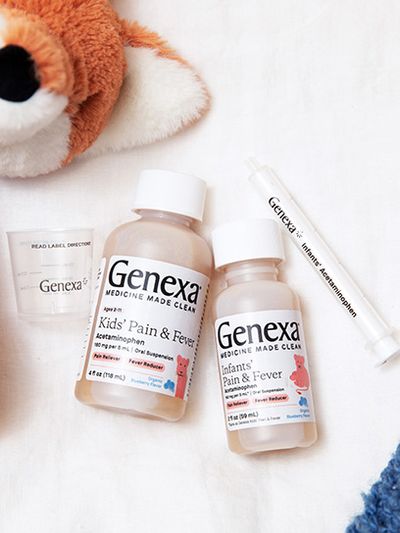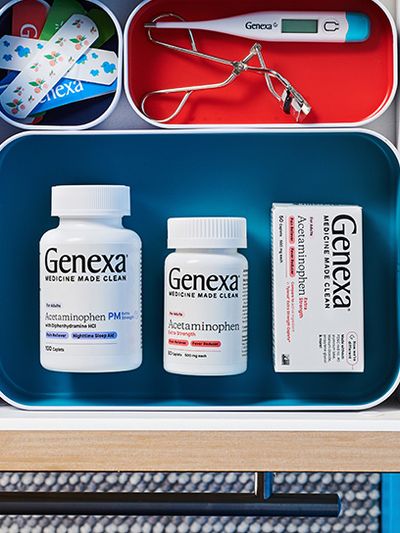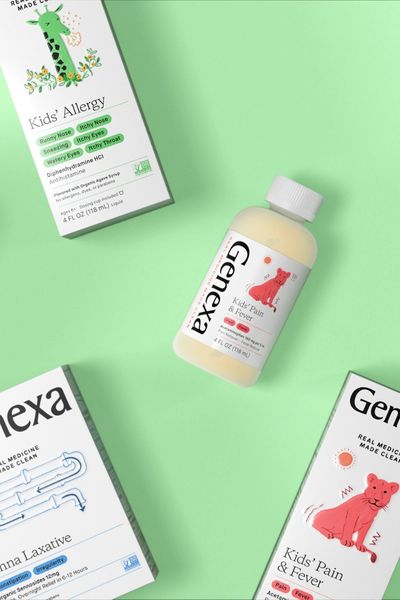What Is Clean Medicine And Why Is It Important?
Understanding Clean Medicine
Table of contents:
You don’t have to look very far these days to find the word “clean” attached to many different types of products. From clean beauty to clean foods, people are becoming increasingly aware of what they put in their bodies.
Recently, some companies have begun to work on cleaning up your medicine, too, by making medicine with same active ingredients you need, but without the artificial inactive ones you don’t.
To help you understand what clean medicine is and how it works, we’ve put together the complete guide to understanding clean medicine.
What is Clean Medicine?
When used to describe most products on the market, the term “clean” is generally used to describe products that don’t have common allergens or parabens and use organic and non-GMO ingredients.
Clean medicines are over-the-counter medications that are manufactured without artificial dyes, colors, flavors, and preservatives and do not contain artificial inactive ingredients that are designed to improve taste.
Clean medicines are typically organic, paraben-free, non-GMO, and vegan, and they are manufactured without the presence of common allergens such as gluten, dairy, and egg. Instead of using artificial ingredients, clean medicine brands might use natural coloring from fruits, berries, or other plants, for example, or flavor their products with natural flavoring.
While clean medicines steer clear of artificial inactive ingredients, many clean medicine products contain active ingredients that are the same as those found in conventional over-the-counter medications.
For example, a clean medicine product designed to reduce pain and fever in kids would use acetaminophen, the same active ingredient found in Tylenol®, but would not contain any artificial inactive ingredients and would use real ingredients in the product.
Clean medicine brands may also produce products that are classified as homeopathic remedies and rely on naturally occurring herbs and plants that have been used in traditional medicine for thousands of years.
Homeopathic remedies are based in traditional medicine practices and are not evaluated by the U.S. Food and Drug Administration (FDA). These remedies typically use plant-based ingredients from plants, flowers, and herbs and may add organic, natural flavoring and colors to improve taste.
Organic flavorings, colors, and fillers used in clean medicine include blueberry extract, agave syrup, beet root extract, rice bran extract, honey, tangerine extract, cocoa powder, sunflower seed oil, vanilla flavor, glycerin, and citrus extract.
It should be noted that there is currently no governing body, certifying agency, or other regulatory requirement that verifies that a medicine labeled “clean” is actually clean. That’s why it’s so important to educate yourself about different clean medicine companies and carefully read the labels of all products to ensure that medicines marketed as clean actually are.
How do clean medicines work?
You might be wondering how clean medicines work if they don’t contain exactly the same ingredients found in conventional over-the-counter medicines like Tylenol®. Clean medicine is designed to give you the same results of conventional medicines without the cheap, artificial inactive ingredients that your body doesn’t actually need.
Clean medicines that deliver active ingredients like acetaminophen or calcium carbonate in the same dose and delivery mechanism (liquid, capsule, tablet, etc) as conventional medicines like Tylenol® or Tums®.
However, clean medicines that use a different concentration of the active ingredient or delivery mechanism (liquid vs pill) may not work exactly the same way. That doesn’t mean that the medicine won’t be effective, but patients may experience different reactions.
Homeopathic remedies are a completely different type of treatment compared to medications that use conventional active ingredients. Therefore, the results delivered by homeopathic remedies should not be compared to the results delivered by conventional remedies because they do not work the same way.
For example, a homeopathic remedy that uses arnica to treat pain should be expected to work differently than medications containing acetaminophen or ibuprofen.
The FDA does not evaluate or approve homeopathic products, so homeopathic remedies from a variety of companies may meet a number of different standards. If you’re interested in using homeopathic remedies to treat symptoms of pain or illness, talk to your doctor or pharmacist about your options. Despite the fact that homeopathic remedies are derived from natural ingredients, certain natural ingredients may still interact with other medications you may be taking.
What is the difference between clean medicine and conventional medicine?
As noted above, one thing that clean medicines and conventional medicines have in common is the use of the same active ingredients.
While many clean medicines use active ingredients in the same dose and delivery mechanism as conventional medicines, this may not always be the case. It’s recommended that you check the label or talk to your doctor if you are unsure about whether the clean medicine you have chosen is comparable in terms of relief offered.
The major difference between clean medicine and conventional medicine is the inactive ingredients that each medication contains. Artificial fillers, parabens, dyes, phthalates, talc, and more can be harmful when used in large quantities, but they are common ingredients in many conventional over-the-counter medications.
Further, the active ingredients for most medicines, including homeopathic remedies, may have an unpleasant taste, smell, or color. As a result, manufacturers often add flavorings to medicines to make them taste better or look better so that children and adults are more likely to take the medicine.
While it’s possible to accomplish these goals with real ingredients like honey or blueberries, most companies turn to artificial ingredients because they are less expensive than organic and non-GMO ingredients.
Manufacturers also add color to their medications for safety reasons. If all pills were small, round, and white, it would be hard to know which is which, which could lead to an accidental overdose. Making medications look different is helpful in order to prevent patients from mixing up the drugs. One additional way to safeguard against mixing up your medications is to always store your medicine in its original packaging so that it is clearly labeled.
Summary
Clean medications use the same active ingredients as conventional over-the-counter medications while skipping the artificial fillers, dyes, and other ingredients that your body doesn’t need and may not be able to safely tolerate.
Instead, clean medicines use real, organic ingredients to improve flavor and color while avoiding parabens and common allergens. People who are sensitive to the effects of conventional medications or who are trying to minimize their ingestion of artificial ingredients may benefit from using clean medicines.
Remember, not all clean medicines are created equally. There is no regulation of the use of the word “clean” by the government or any certifying agency, so the best way to know if a product is truly clean is by reading the label.
Truly clean medicines will use effective active ingredients in the same dose and delivery mechanism as the conventional over-the-counter medications while using organic, real inactive ingredients to improve flavor, color, and texture.






